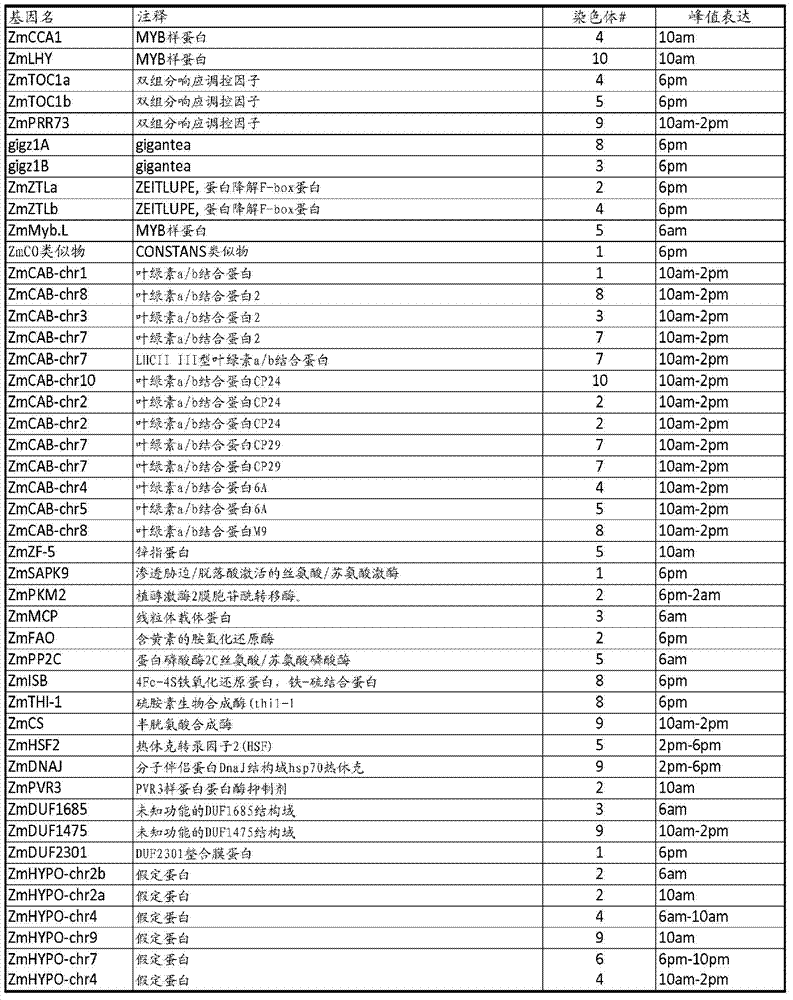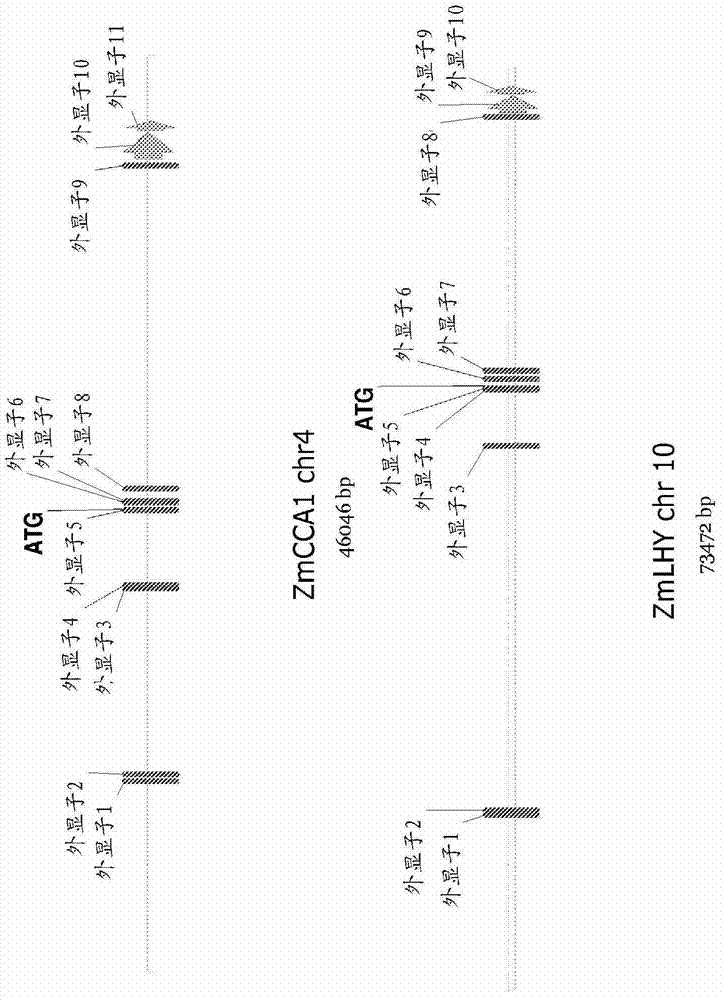Identification of diurnal rhythms in photosynthetic and non-photosynthetic tissues from zea mays and use in improving crop plants
A circadian, maize-based technology, applied in the field of molecular biology, can solve problems such as separation
- Summary
- Abstract
- Description
- Claims
- Application Information
AI Technical Summary
Problems solved by technology
Method used
Image
Examples
example 1
[0314] Example 1. Study of Circadian Rhythm in Maize
[0315] Maize plants (B73 genotype) were grown under field conditions and sampled at the V14-15 stage of reproduction. Lighting conditions at the time of sampling were approximately 14.75 hours of daylight according to US Naval Observatory records (Materials and methods). Samples of parietal leaves and immature ears were collected at 4-h intervals on 3 consecutive days starting at sunrise on day 1. RNA profiling was performed with custom Agilent maize arrays designed to probe global gene expression patterns in approximately 105k probes. Samples for the Illumina Digital Gene Expression (DGE) platform were collected in 3 replicates from 3 plants every 4 hours over a period of 1 day. The 3 samples were then divided into 3 groups for analysis.
[0316] Apply the GeneTS method to the data to determine periodicity (Wichert, et al., (2004) Bioinformatics 20: 5-20 (Wichert et al., 2004, Bioinformatics, Vol. 20, pp. 5-20...
example 2
[0337] Example 2. Genome structure of ZmCCA1 and ZmLHY
[0338] In the process of inferring the maize gene models of ZmCCA1 and ZmLHY, it was found that the genes were encoded by gene regions of about 45 kb and 78 kb, respectively ( Figure 4 ). Maize genes of this size are extremely rare, with an average gene size approaching 4 kb (Bruggmann, et al., (2006) Genome Res 16: 1241-1251 (Bruggmann et al., 2006, Genome Research, Vol. 16, pp. pp. 1241-1251)). The exon-intron models of the ZmCCA1 and ZmLHY genes were deduced from the alignment of their cDNA sequences and genomic sequences obtained from BAC sequencing. The ZmCCA1 gene consists of 11 exons separated by 10 introns of varying length. The longest are intron #2 (about 9 kb) and intron #6 (about 15.6 kb), which are rare in the maize genome. The translation initiation codon ATG is located in exon #5. This means that the untranslated 5'UTR is divided into 5 small exons ranging in size from 40-200 bp. The ZmLHY g...
example 3
[0341] Example 3. Circadian regulated promoters
[0342] The diurnal (day) cycle of light and temperature is an environmental factor to which all living organisms adapt. Almost all aspects of plant physiology such as growth, development, photosynthesis and photosynthesis distribution, respiration, stress response, hormonal response, nitrogen assimilation are regulated diurnally.
[0343] Time-of-day-specific promoters provide the means to manipulate specific physiological or metabolic processes in a controlled manner according to natural circadian patterns. For example, artificial downregulation of morning clock genes CCA1 and LHY during the day led to upregulation of genes involved in photosynthesis and carbohydrate metabolism, leading to improved growth and yield. To achieve downregulation, the CCA1 and LHY promoters drive their own RNAi expression cassettes.
[0344] Genome-wide circadian RNA profiling provides candidates with high inducibility and low backgrou...
PUM
 Login to View More
Login to View More Abstract
Description
Claims
Application Information
 Login to View More
Login to View More - R&D
- Intellectual Property
- Life Sciences
- Materials
- Tech Scout
- Unparalleled Data Quality
- Higher Quality Content
- 60% Fewer Hallucinations
Browse by: Latest US Patents, China's latest patents, Technical Efficacy Thesaurus, Application Domain, Technology Topic, Popular Technical Reports.
© 2025 PatSnap. All rights reserved.Legal|Privacy policy|Modern Slavery Act Transparency Statement|Sitemap|About US| Contact US: help@patsnap.com



